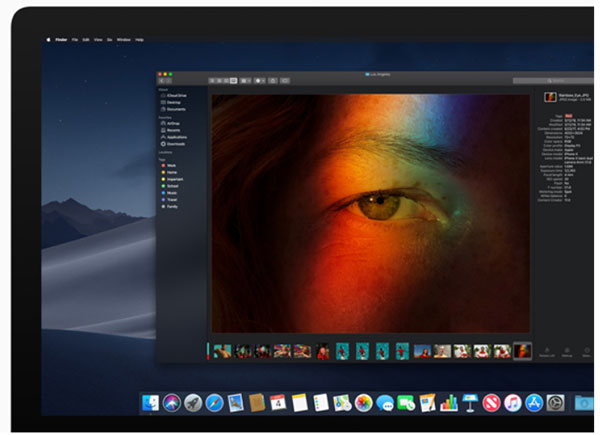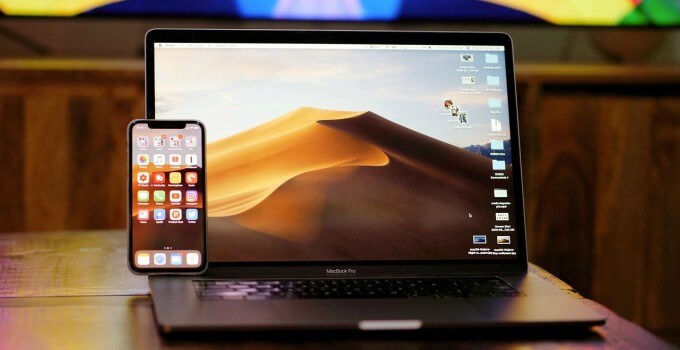«12»
- Install Mojave On Unsupported Mac
- Install Mojave On Unsupported Mac Dosdude1
- Install Mojave On Unsupported Macbook Pro
- Mac Os Mojave Patcher
- Install Mojave On Unsupported Mac Mini
Jul 25, 2018 To get a copy of macOS Mojave to install on an unsupported Mac, you have to be in the Apple Beta program but more importantly than that, you have to download it on a supported Mac.
- Jul 25, 2018 But, if you're now wondering where it gets Mojave from, you've spotted a potential hang-up in the process. To get a copy of macOS Mojave to install on an unsupported Mac, you have to be in the Apple Beta program but more importantly than that, you have to download it on a supported Mac.
- It is better than macOS 10.15, Catalina, due to its powerful improvement and new features. However, Apple dropped various Mac versions, making installation of macOS 11 on unsupported Macs almost impossible. In this article, you will learn about the compatible devices and how to install macOS 11 on older Mac or unsupported devices.
- Using DosDude1's Mojave Patch Tool, you can install a patched version of Mojave on unsupported Macs. Sit back and relax while Mojave is being installed onto your Mac.
- Mojave is being installed onto your Mac. Once the installer is done installing, shut down your computer. This time, instead of installing Mojave again we need to install the necessary patches for Mojave to run properly. Click macOS Post Install in either the side menu or from the dropdown menu in utilities.
Comments
- pls direct me to the right forum is the following question is not to be posted here.I downloaded the patch version dosdude1 Current version: 1.1.2.Created the flash drive and got a successful complete.Tested on a Macbook Pro mid 2011 and a new hard disk.The installation bar goes to the end and stays there, waited for a long time and have to shutdown the computer.I used Mojave Beta2 and i don't know if this is the problem. the dosdude1 version suggest the latest.So what Mojave beta works with Dosdude1 current version: 1.1.2?anybodyP.S. I know there some old version of this tool, which one will work?
- I have a 2011 iMac, cant i just upgrade the chip, ram and graphics card to make it work?
Not Happy, I have a iMac 27p SSD I7 mi-2009 fast, and NO MOJAVE UPGRADE, disgusting, Authorize only Mac's after 2012, that is 6 years old, use not acceptable when you think that your machine costs 4000 dollars, even Microsoft does not do that
A Mac is not a Phone !
I can understand that some features cannot be available, but the FULL release not available without a good technical cause cannot be accepted without fight.
Is there an association there that could issue a class action to claim for Mojave support for our not so old Macs ?
I have a 2009 PC with the latest Windows 10, Is not Apple ashamed to issue a Mojave is forbidden to a perfectly fast and modern machine like the iMac mid-2009 ? Same for MacBook Pro ? same for MacBook Air ? Please Steve come and clean their minds.
We have to make the buzz on Social Networks and Mac information sites, If not the delay will be 5 years, then 3 years, then 1 year and we will have to go back to Windows PC.
Best Regards
Not Happy, I have a iMac 27p SSD I7 mi-2009 fast, and NO MOJAVE UPGRADE, disgusting
Last it seems that there was a deal with Microsoft to use a microsoft antialiasing software up to 2017, this would restrict Apple Mac OS to Retina display, may be this is the real reason for discarding more that 5 years old Macs that are not Retina, a number of users having non retina screens (external ),are claiming that fonts are ugly with Mojave !!
So do not upgrade to MOJAVE if you have non Retina external display, try it with a Dongle.
- That is correct, and is exactly what I do, OutdoorAppDeveloper I would like to add a question. What if you upgraded the RAM and switched from an HDD to an SSD, would it be ok to install Mojave on a 2009 Mac with all of these upgrades?
- I did this but now the MBP (early 2011) start complaining about hardware accelaration not turned on. Any ideas?
- I have an iMac mid 2011 and I really intend to buy a new one. But for now all I can do is update it to Mojave and upgrade my actual RAM and change disk to SSD.
- I attempted using macOS Mojave Patcher v1.2.2, downloaded Mojave as instructed, created the USB installer however after rebooting the USB installer could not be seen. There’s no way to boot from it at all, any ideas?edited January 2019
- There's a compelling reason for installing Mojave on my mid-2009 MacBook Pro: Adobe Creative Cloud 2019 will not install on any older versions of MacOS. DosDude's patcher worked flawlessly, and the only problem with the update is cosmetic; the menu bar has a grey tint. I was able to install CC 2019 and it works perfectly.
You can disable transparency and then it'll work normally.There's a compelling reason for installing Mojave on my mid-2009 MacBook Pro: Adobe Creative Cloud 2019 will not install on any older versions of MacOS. DosDude's patcher worked flawlessly, and the only problem with the update is cosmetic; the menu bar has a grey tint. I was able to install CC 2019 and it works perfectly.
system preferences>accessibility>Display> enabling 'reduce transparency' removes the 'greying out glitches in light mode.- Posts: 2unconfirmed, memberHello!!! I'm in desperate need of some help. I tried following the provided in the mojave tool however I after step 6 my mac shut down and when I turn it on it has a cancel sign 🚫
I'm wondering if anyone can help me at least get it back to how it was before?
Thank you! - Posts: 2unconfirmed, member
I tried to add an emoji of the cancel sign but it didn't work so I'll add a picture of what it looks like here: - Though I used a different method and it worked like a charm. The methods can be found here- https://techrechard.com/how-to-install-macos-catalina-on-unsupported-mac/
If your Mac is running macOS High Sierra (10.13), you may not be able to get new versions of certain apps to work. For instance, Lightroom and Photoshop's latest versions might not be compatible, which means you will need to upgrade to a higher version like macOS Mojave (10.14). This article shows you how to upgrade or do a clean install of macOS Mojave on a Mac currently running macOS High Sierra. Of course, this assumes that your Mac supports macOS Mojave.
If you're doing an upgrade, you can directly download and run Mojave installer app on your High Sierra system. The process is simpler than doing a clean install because you won't need an external USB drive for installation. The first method is explained below.
Warning: Not all Mac models are eligible for upgrading to macOS Mojave. Please check the hardware requirement first.
- MacBook Pro (Mid 2012 or newer)
- MacBook (Early 2015 or newer)
- MacBook Air (Mid 2012 or newer)
- Mac mini (Late 2012 or newer)
- iMac (Late 2012 or newer)
- iMac Pro (2017)
- Mac Pro (Late 2013)
Method 1: Direct Upgrade from macOS High Sierra to macOS Mojave
Oldos haksli vrata percepcije pdf to jpg. Since the first release of macOS, Mac users can directly upgrade to a new version via macOS installer app, which you can get from App Store. This is the official way to upgrade macOS from old version to a new version.
Step 1: The first step whenever you install a new OS version is to take a back up of your data, so you can do that now via Time Machine on an external drive.
Step 2: Go to Mac App Store and search for 'Mojave'; alternatively, you can open this link provided by Apple. (It is recommended to use Safari browser if you're using the link.)
Step 3: Mojave installer app is pretty big and you have to wait some time to fully download it from Mac App Store.
Step 4: When the download is finished, the app (called Install macOS Mojave) will be open automatically. Now, follow the instructions on your screen to complete the installation.
Pros:
- Simple enough and no extra step.
- Less error and no data loss.
- Completely free of charge.
Cons:
- Can not find macOS Mojave app in Mac App Store.
- May download a damaged copy of macOS Mojave app .
- Your Mac should be working normally.
This method is much easier so most people use this way to upgrade to a higher version of macOS once that is no longer the latest version. However, it is not always working as expected and you may see error like the following one:
If you can not get in your Mac or you prefer to do a clean install, then the direct upgrade is not suitable. You need to create a bootable macOS Mojave USB drive first and use it to install Mojave on your Mac. Hence, this is an indirect way to upgrade to Mojave from High Serria. We will share more details about this method in next section.
Method 2: Upgrade from High Serria to Mojave via Clean Install (Bootable USB)
A clean install ensures that your hard drive is wiped clean and formatted before installing a new version of macOS, which means your apps and data will all be gone. Sometimes, that's the desired result, especially when your Mac is running slowly because of heavy data and you want to refresh it along with the upgrade to the latest or at least a higher macOS version. If you need to do a backup, do that now using Time Machine and an external drive. You will also need an additional external drive for the installer.
Part 1: Create macOS Mojave Bootable USB in Easy Way

There are two different approaches to create macOS bootable USB. The simple way is via third-party apps, which usally involves less steps and has a GUI. The other way is by using a set of combined text commands in Terminal app. We will go with the easy one first.
Step 1: Get a copy of macOS Mojave DMG file.
- Download Link 1: https://archive.org/download/macOS_Mojave.dmg
- Download link 2: https://sundryfiles.com/9tz
Step 2: Plug in an USB drive to your computer (PC or Mac) and install UUByte DMG Editor on it.
Step 3: Open UUByte DMG Editor software and click the 'Next' icon at the right side of Burn menu. At this time, you will be redirected to a new window.

Step 4: Click the 'Browse' button to locate the macOS Mojave DMG file you downloaded previously. And choose the right USB drive in second column.
Step 5: When the above steps are completed, hit the 'Burn' button at bottom to start creating macOS Mojave USB installer from DMG file. Wait about 5-10 minutes.
You will see a success message at the end of process and this means a bootable USB installer is ready! Same frutteto 75 manual. You can now use it to install macOS Mojave on your Mac and start the upgrade process.
Bonus: Create Bootable Mojave USB Installer on Mac via Commands
You can create any macOS bootable USB installer on a PC or Mac with UUByte DMG Editor but text command is only available on Mac. This means you should get a working Mac in order to apply this trick.
First, download macOS Mojave app from App Store. Quit the app when it is launched after download. Now, open Terminal and type in 'sudo' (without quotes) and a space, and leave it like that. Now, go to Finder and right-click on the installer file to select Show Package Contents.
Open Terminal and type in 'sudo' (without quotes) and a space, and leave it like that. Now, go to Finder and right-click on the installer file to select Show Package Contents.

Locate the file called createmediainstaller inside the Resources subfolder in the main Contents folder. Keep your Terminal window visible and drag this file into Terminal. You'll see that a location has been added after your sudo command.
Type --volume and then a space, and leave it for now. Back in Finder, go to /Volumes using the Go → Go to Folder option. You can now connect your USB drive to your Mac. From Finder, drag your device's icon into Terminal again.
Hit Enter and then enter your password for the Mac when prompted to do so. When you see the prompt on Terminal asking you if you want to continue, type Y and hit Enter.
The USB installer will be created in a few moments. Now that you have the installer ready, you can proceed to the installation part.
Part 2: How to Install macOS Mojave on Mac from Bootable USB
Step 1: Restart your Mac and hold the Option key down when you hear the startup chime.
Step 2: Select Install macOS Mojave in the list you see on your screen. You may need to use the arrow keys and the Enter button if you can't use the mouse.
Step 3: When the Utility window appears, select Disk Utility. Then, choose your main hard drive and click Erase.
Step 4: When the formatting is done, go back to the Utility window and choose Reinstall macOS.Follow the instructions on your screen to install macOS Mojave.
Install Mojave On Unsupported Mac
You have successfully done a clean install of macOS Mojave from a USB installer on a machine running macOS High Sierra. Be sure you follow all the instructions in this article, especially where the command line inputs in Terminal are concerned.
Pros:
Install Mojave On Unsupported Mac Dosdude1
- Universal applicable.
- Work on both PC and Mac.
- Can be used on multiple Macs once bootable USB being made.
- No need to download macOS install app when it is not available.

Install Mojave On Unsupported Macbook Pro
Cons:
- Has to install additional software or use text commands.
- Require an external USB drive.
- Installation may fail on unsupported Mac models.
Mac Os Mojave Patcher
Summary
Install Mojave On Unsupported Mac Mini
In conclusion, you can upgrade from High Serria to Mojave in both direct and indirect way. It is up to you what kind of situation you are in. If you could find macOS Mojave app in Mac App Store, then it is recommended to finish the upgrade within the app. If not, then you can create a bootable macOS Mojave USB and use it to install macOS Mojave on your High Serria powered Mac.